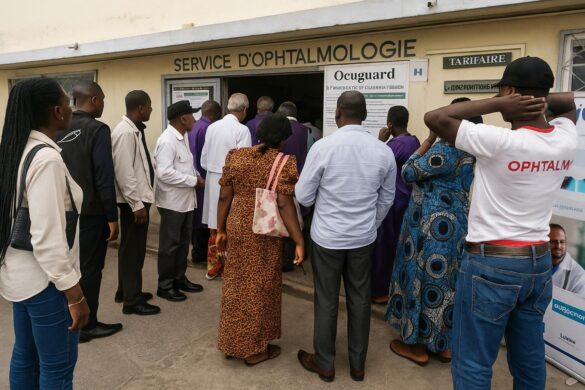Talangaï Hospital Highlights Dry Eye Syndrome
On October 9, the ophthalmology department of Talangaï district reference hospital transformed its waiting room into a pop-up clinic, offering Brazzaville residents free screenings for dry eye syndrome—an often overlooked condition that can blur vision, cause stinging, and reduce productivity at work.
This initiative, organized to coincide with World Sight Day observed every second Thursday of October, addressed growing concerns among urban professionals who spend long hours in front of screens. Doctors emphasized that early detection is inexpensive and prevents complications such as chronic irritation medically known as xerophthalmia.
World Sight Day Resonates in Brazzaville
Across the city, billboards carried the 2023 global slogan “Love Your Eyes.” Talangaï Hospital adapted the slogan into Lingala and French on leaflets distributed in markets from Ngamakosso to Mikalou, inviting families to two days of consultations, vision checks, and counseling.
Dozens queued in the shade of jacaranda trees as nurses recorded age, occupation, and screen time. “Eye health is essential for economic inclusion,” noted the hospital director, citing World Health Organization data showing that 90% of vision impairments are preventable or treatable with timely care.
Participants ranged from taxi drivers battling dust to students studying for exams under dim lightbulbs. Many discovered high intraocular pressure, an early sign of glaucoma, or the first opacities heralding cataracts. All left with a personalized sheet detailing risk factors and simple protective routines.
Inside the Free Screening Process
Screening began with the Schirmer test—a thin paper strip slipped under the lower eyelid to measure moisture in millimeters after five minutes. Values below ten signaled possible dry eye, leading to fluorescein staining and a slit-lamp examination to detect corneal micro-injuries.
Those flagged for cataracts received dilated fundus photography to document lens clouding. “We refer confirmed cases for surgery within our network,” explained the ophthalmologist leading the campaign. She emphasized that all procedures followed national guidelines and were recorded for epidemiological follow-up.
Patients diagnosed with glaucoma underwent tonometry and visual field mapping before receiving subsidized beta-blocker eye drops through a partnership with a local wholesaler. A pharmacist counseled each recipient on adherence, stressing that missed doses can accelerate optic nerve damage.
Diet, Hydration, and Simple Habits
Beyond prescriptions, counselors emphasized lifestyle. Regular breaks every twenty minutes, humidifiers in air-conditioned offices, and wide-brimmed hats for motorcycle taxi drivers featured prominently. “The eye is thirty percent water; dehydration dries out the tear film
